Technology
The best MacBook accessories for 2024
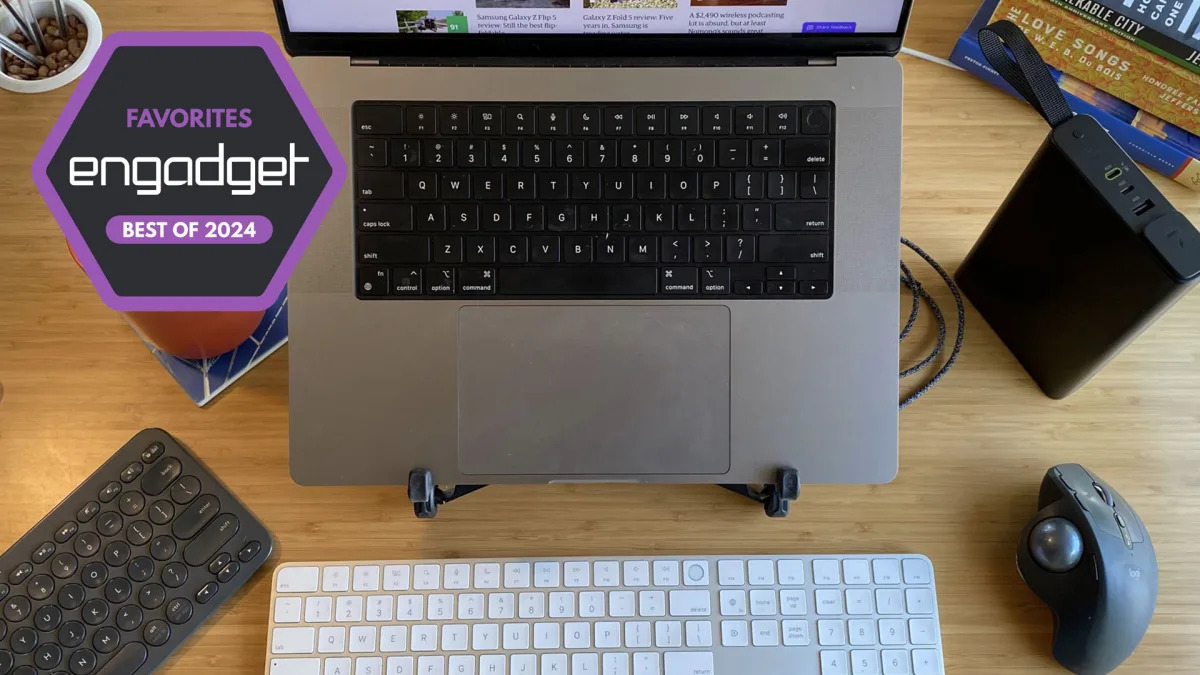
Whether you’re a long-time Apple fan or a recent convert, investing in the right MacBook accessories can seriously enhance your daily workflow and overall experience. Sure, a MacBook is a powerful machine on its own, but adding a few key extras can really level-up your setup. From increasing comfort with a lap desk to expanding its limited ports with a USB hub, there are plenty of reasons to consider some well-chosen accessories.
Need more storage space? External drives can ensure you never run out of room for your projects. Want to protect your investment? A hard shell case is a must-have MacBook Pro accessory to shield your device from the inevitable bumps and scrapes that come with daily use. If you use your MacBook for work, whether it’s on the go or at home, it’s really easy to change up your workspace with a few thoughtful add-ons.
Plus, Apple’s seamless ecosystem means great compatibility between your MacBook and other devices, like your iPhone, so you can find accessories that work across both. Whether you’re looking for protection, convenience or something to increase productivity, we’ve rounded up the best MacBook accessories to make your setup even better.
Best MacBook accessories
Our current favorite webcam will up the video quality of all of the conference calls you take. The Logitech Brio 500 records 1080p 30fps video, and its improved light correction will help you put your best face forward regardless of the environment in which you’re streaming. Much like Logitech’s other webcams, the Brio 500 is a plug-and-play solution — just connect it via one of the USB-C ports on your MacBook and start a call. But you can customize things further if you want using the LogiTune software, which lets you change things like field of view, contrast, brightness, autofocus and more. The Brio 500 also supports Logitech’s RightSight technology, which keeps you in the middle of the frame even when you move around, similar to Apple’s Center Stage feature on its iPads. Admittedly, an external webcam will be most useful for those working with an older MacBook that still has a 720p built-in camera, but even those with new MacBooks can get use out of the Brio 500. It also makes a good Mac accessory. If you spend most of your days on video calls, you’ll want the extra bump in quality and superior customizations that Logitech’s accessory provides. — Valentina Palladino, Senior Commerce Editor
- RightSight feature keeps you in frame as you move around
- Plug and play USB-C connection
- Excellent auto light correction
- Records 1080p video at 30fps
- More expensive than other cams
The built-in cameras on MacBooks may have gotten better over the past few years, but they still don’t include a cover for when you want a little extra privacy. Webcam covers like these from Yilador are cheap and effective — these are super thin at 0.027 inches and adhere right over your webcam, allowing you to slide a shutter over the camera when you’re not using it. They’re easy to install, and the adhesive is secure enough that the cover won’t fall off but you can also remove the cover and stick it onto a new laptop when you eventually upgrade. The standard black option is great if you want the cover to blend in with the bezels surrounding your MacBook’s display, or you can opt for a fun design that features pizzas, fruits or cute little characters. — V.P.
- Inexpensive
- Provides an effective physical block
If you take your MacBook from room to room with you, you’ve probably found yourself working in some less-than-ergonomic positions. When you want to relax on the couch or your favorite armchair and still get some work done, a lap desk like this one from LapGear can make it more comfortable, making it one of the most useful MacBook Pro accessories. It has enough surface area to fit 13- and 15-inch MacBooks, with extra side space where you can use a wireless mouse along with your notebook. The raised ledge towards the bottom will prevent your laptop from sliding off, and the two storage wells at the top are good places to store pens, sticky notes, snacks and more. — V.P.
- Space for pens Post-Its and other small items
- Makes working from the couch more comfortable
- Bottom lip keeps your laptop from sliding
- Doesn’t fit a 16-inch MacBook Pro
The Satechi Dual Dock Stand is our top pick for MacBooks in our docking station guide. It lets you go from using your laptop on the road to having a complete, peripheral-heavy set up back at your desk using a single (dual) plug. The dock fits neatly beneath your computer and has ports for monitors, Ethernet, and plenty of accessories with two USB-C and two USB-C connections. It connects to the two USB-C inputs on a Pro or Air, which means it can get around some of the multi-monitor limitations older MacBooks have. It’s not powered, which makes it more portable, but you’ll need to either run on battery, provide power via the USB-C passthrough port or do what I do and just use your MagSafe connector. — Amy Skorheim, Reporter, Buying Advice
- Tucks beneath a MacBook for a neater desk
- Good variety of ports
- Convenient on/off switch
The latest MacBook Pros may have a bevy of ports, but they’re the only Apple laptops that have that level of connectivity. Anker’s 555 USB-C hub and MacBook Pro accessories like it will be a necessity for anyone working with a new MacBook Air or an older Mac model. Anker’s hub gives you eight ports: two USB-A ports, one HDMI port, SD and microSD card slots, one Ethernet jack and two USB-C ports, one of which provides 100W power to charge your MacBook. The USB-C and USB-A ports can handle 10 Gbps file transfers, perfect for an external hard drive or SD card reader, and you can connect a 4K/60Hz external monitor via the HDMI slot. Anker’s accessory may be ultra-portable, but it has enough power and versatility to be the only laptop hub you need. — V.P.
- More affordable than a dock
- Two USB-A ports and microSD slots
- Just one USB-C downstream port
In our fast charger guide, Apple’s included 140W power adapter was the quickest to refill an M1 MacBook Pro, but it only has a single port, which doesn’t make it one of the best MacBook Pro accessories. As our reviewer Sam Rutherford points out, that seems like a missed opportunity. Belkin’s four-port GaN BoostCharge Pro 108W charger gives you space for two USB-A and two USB-C cables and was the second fastest performer, getting the laptop from ten percent to 75 percent in about 45 minutes. The starting price is also about $10 cheaper than Apple’s. The BoostCharge Pro wasn’t the top pick in our 100W-plus category because it lagged when powering an Android phone, but if you’re looking for a reliable wall charger for your MacBook, this will serve you well. — A.S.
- Refills MacBooks quickly
- Four ports to charge multiple devices at once
It would be nice if you could grab a random charging cable and have it work correctly with any device. But not all cables are the same: If you want to take advantage of a fast charging brick or the quick-charge port of a power bank, you’ll need a power delivery cable with a high wattage rating. Anker’s USB-C to USB-C 100W cable was the conduit of choice when Sam tested out fast chargers for our guide. It’s plenty long at 10 feet and it’s affordable at $16 (although, we’ve seen it go on sale for less). While it supports data transfer (which is useful if you have an external SSD), it’s not rated for video output. For that, you’ll want a video cable or one marked as Thunderbolt 3 or 4. — A.S.
- Enables fast charging
- Lont 10-foot length
- Durable braided cord
When you take your MacBook on the road, it’s nice to have a way to juice it back up if an outlet isn’t available. Mophie’s Powerstation Pro AC is a massive, 27,000mAh power bank with 20W USB-C and USB-A ports, a 60W USB-C power delivery port and a 100W AC plug. In our tests, it recharged a 16-inch MacBook Pro from ten percent to 75 percent in 89 minutes — and that’s while using WiFi, a VPN, Slack and multiple active tabs in Chrome. The 140W power brick that comes with that laptop is too power-hungry for the 100W AC port, but plugging the USB-C end of the MagSafe cable into the Powerstation worked great. It’s one of the best MacBook accessories you can get your hands on, plus, it will charge up your other Apple devices, too. — A.S.
- High capacity for multiple charges
- Sub 100Wh size is TSA-compliant
- Can power small accessories
Hunching over a MacBook all day is murder on your back and neck, so it’s wise to make your everyday setup more ergonomic by using a stand paired with a separate keyboard and wireless mouse. The Roost Stand adjusts to seven different heights and can accommodate up to a 16-inch MacBook Pro. It folds up to a slim stick and weighs just over six ounces, making it not only good for your desk, but also as part of your go-everywhere digital-nomad setup. Just be prepared: when I set mine up in public, I always get questions from strangers. — A.S.
- Folds up for travel
- Adjustable height for better ergonomics
- Can support a 16-inch MacBook Pro
- Takes up more desk space than a monitor arm
There is a mouse graveyard in my office cabinet — devices I’ve tried and discarded because they didn’t help with my shoulder aches. The solution was a roller ball mouse and Logitech’s MX Ergo is the best I’ve found. It tilts for a more natural “handshake” grip and has a slow-mo option for more precise movements in Photoshop and other apps. The scroll wheel is speedy but precise, as is the trackball and you can switch between two devices with the pairing button. You can even program the various buttons to do app-specific things using Logitech’s software. It’s also a handy companion for an iPad and makes a good Mac accessory as well.
My only gripe is the antiquated micro-USB charging port, but the battery lasts long enough that I only have to use it once every few months. It’s pricey at $100, so you may prefer the $70 Ergo Lift. It also offers a handshake grip, but without the roller ball, and has Bluetooth or USB dongle connectivity options. — A.S.
- Ergonomic handshake tilt
- Trackball reduces arm movement
- Long battery life
Once you’ve got your stand and mouse, you’ll probably want an external keyboard as well. For a complete ergonomic setup, we recommend a keyboard with a split and tented design. Unlike a fully split board, which can take a bit of relearning, an Alice layout angles the keys so you can keep your hands in a more neutral position, but typing feels much like is always has. The Ergo K860 from Logitech connects quickly via Bluetooth and properly maintains Mac-specific hot keys right out of the box like volume, brightness and opening Mission Control. That means it’ll also work as a Mac accessory.
One thing to note is the number pad and built-in wrist rest make it pretty large so it might not work for smaller desks. If you want a wired ergonomic option with a particularly compact footprint — and you’re prepared to take a couple weeks to relearn how to type — you can try Zsa’s Voyager. It’s a fully split, programmable mechanical board that I use daily.
- Comfortable Alice split isn’t difficult to type on
- Mac-specific keys work out of the box
- Quickly connects via Bluetooth
- Takes up a lot of space
- Wrist rest isn’t removable
I’ve carried Logitech’s K380 keyboard for travel and coffee shop sojourns for five years (and I’m currently typing on it). It puts up with rough treatment and connects easily to a roster of machines, including Mac, iOS, Windows, Android and Chrome OS. It has a that critical forward delete key and three Bluetooth pairing buttons so you can switch quickly between different devices. It takes three AAA-cell batteries, but lasts for over a year on a set. The top-row function keys support a few Mac-specific shortcuts like volume, mute, playback control and the Mission Control button that shows all your open apps at once. — A.S.
- Compact for travel
- Three device buttons for easy switching
- Includes arrow keys
- Small size can feel cramped
Moft’s Sit-Stand laptop desk is a two-pound, flat-folding amalgamation of metal boards, magnets and vegan leather that reconfigures into a surprisingly sturdy prop for your MacBook. Standing mode lifts your laptop a good 10 inches so you can stand occasionally, switching up your working position with minimal effort. Gravity alone holds your laptop to the stand, so maybe don’t leave it unattended, but even with energetic typing, my laptop remained stable and wobble-free. It folds into four more positions for sitting, including a 25-degree angle that elevates the screen while still being comfortable for typing. The 45- and 35-degree arrangements get your screen to eye level, but you’ll need an external keyboard to type comfortably. The 60-degree formation is too steep for a MacBook, but will do a great job if you have a tablet. — A.S.
- Creates a sturdy base
- Adjusts to create one standing and multiple sitting positions
- Premium feel
Technology
Ulefone Armor Mini 20 Pro & Mini 20T Pro run various performance tests
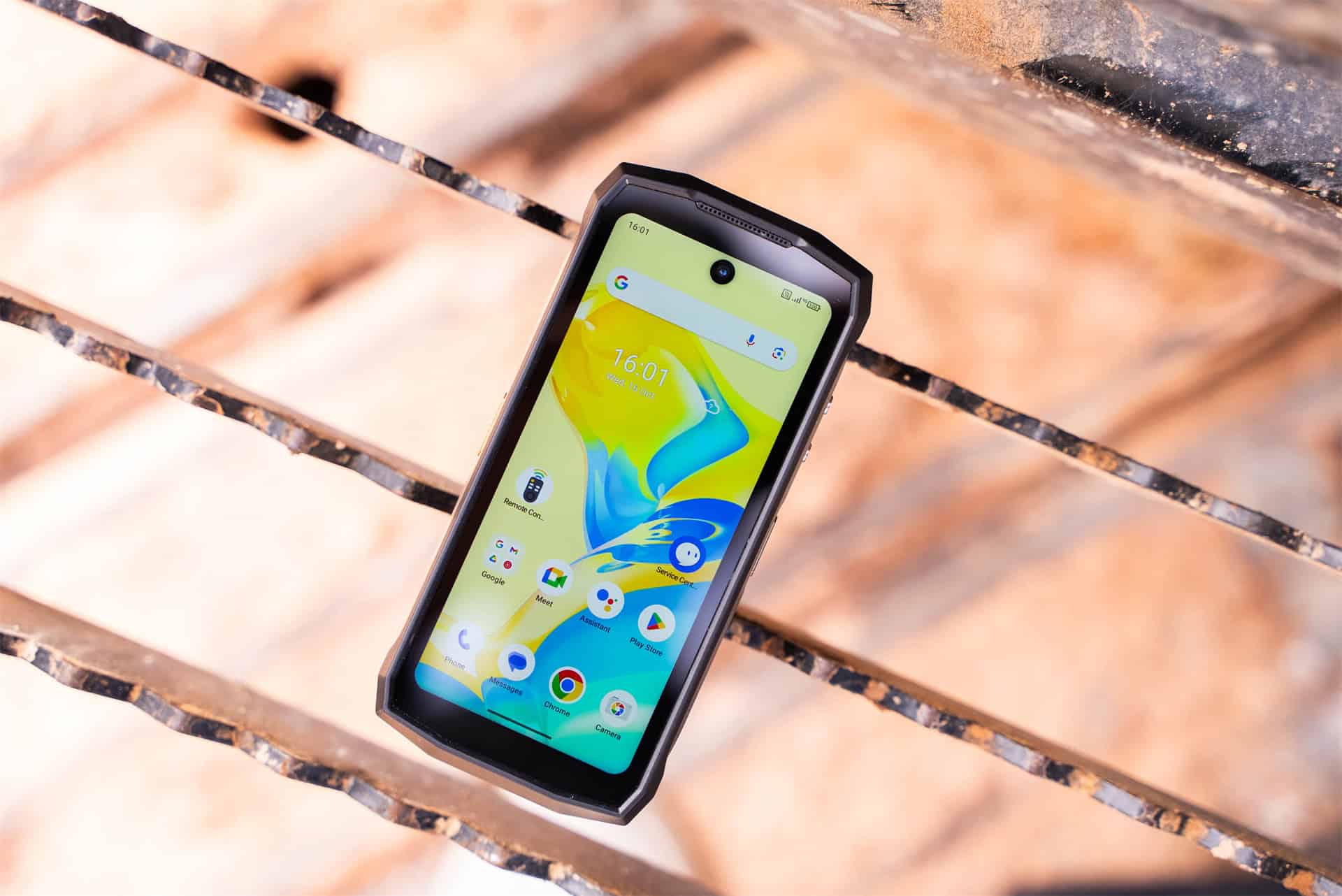
Ulefone recently announced the Armor Mini 20 Pro and Armor Mini 20T Pro smartphones, and the company has ran a bunch of performance tests on them. These two handsets are small rugged devices, which makes them rather unique.
The main difference between them comes to thermal imaging tech. The ‘T’ version has thermal imaging tech, while the other phone does not. It tries to compensate for that with an infrared camera, though.
The Ulefone Armor Mini 20 Pro & Mini 20T Pro go through several performance tests
Ulefone ran AnTuTu, Geekbench 6, 3D Mark, and Speedtest tests on the devices. The two phones have the same performance-related specs and software, so the results should be identical, which is why only one is shown in the video below.
The Ulefone Armor Mini 20 Pro series managed to reach 434,964 points on the AnTuTu benchmark. Speaking of which, the phone is fueled by the MediaTek Dimensity 6300 SoCo. It also comes with 8GB of RAM; which can be expanded to 16GB via virtual RAM.
In regards to the Geekbench 6 score, the device managed to reach 791 points in the single-core test, and 2,102 in the multi-core test. That’s per course for the MediaTek Dimensity 6300 processor.
In the 3DMark Wild Life test, the phone score 1,379 points. The only test that remained is the 5G Speed Test, that one will depend on the 5G speeds in your area, and with your carrier, of course. Ulefone managed to reach 192Mbps download, and 25.7Mbps upload speeds, though.
These phones use a tiny display, and a large battery
It’s also worth noting that both of these smartphones are IP68/IP69K and MIL-STD-810H certified. They’re rugged phones with a large battery (considering their size). They include a 4.7-inch display and a 6,200mAh battery pack.
Android 14 comes pre-installed, while a 50-megapixel main camera sits on the back. The Ulefone Armor Mini 20T Pro will be priced at $329.99, while the Armor Mini 20 Pro costs $249.99. They’ll go on sale on October 21 via AliExpress. The company is also running a giveaway, in case you’re interested.
Technology
DJI confirms that US customs is holding up its latest consumer drone
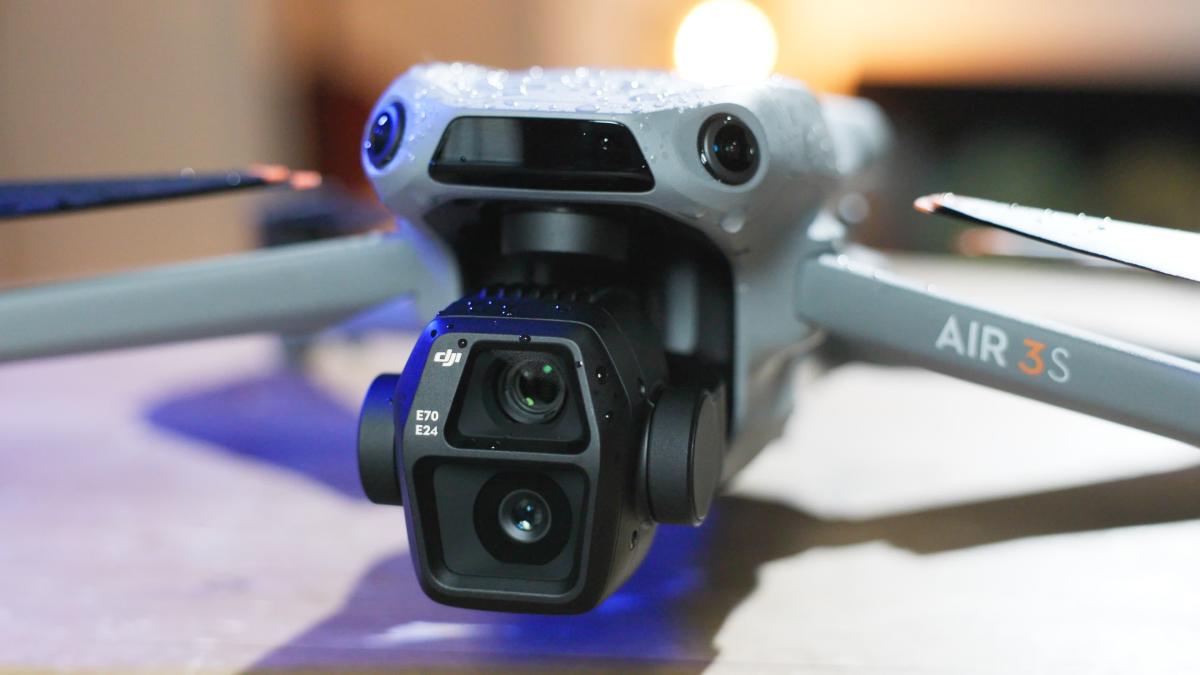
Many of DJI’s drones including its latest consumer products are being held up at the US border, the manufacturer said in a blog post today. It appears to be a customs matter and not related to proposed US legislation to ban DJI products (the Countering CCP Drones Act) currently in US Congress. However, the holdup means that sales of DJI’s latest Air 3S drone will be delayed, the company told The Verge.
“The U.S. Customs and Border Protection (CBP) has cited the Uyghur Forced Labor Prevention Act (UFLPA), as the reason for the current holdups,” the DJI ViewPoints team wrote. “This assertion made against DJI, however, is entirely unfounded and categorically false.”
Calling the situation a “misunderstanding,” DJI said it’s sending documentation proving it complies with the UFLPA. It added that it has no manufacturing facilities in and doesn’t source materials from Xinjiang, the region that’s a red flag for the US in terms of Uyghur forced labor violations. It also noted that it’s not a listed entity under UFLPA and that its supply “undergoes rigorous due diligence by respected US retailers.” US Customs and Border Protection has yet to comment on the matter.
While the US House of Representatives did pass the a bill to block DJI’s drones, the Senate removed that clause from the 2025 National Defense Authorization Act. It was later re-introduced as an amendment, though, and could still make it into the final bill. If so, imports of new DJI drones could be blocked, but a ban wouldn’t likely prohibit current owners from using them. DJI has a massive share of the worldwide drone market upwards of 70 percent as of 2021, according to Statista. including as much as 90 percent by public safety officials.
Science & Environment
Crude oil prices edge higher after four-day losing streak


Crude oil futures rose slightly Thursday after a four-day losing streak as fears of a supply disruption in the Middle East eased and a surplus looms over the market next year.
Although Israel has held back from retaliating against Iran so far, the situation “could change at a moment’s notice,” said Aditya Saraswat, Middle East research director at Rystad Energy.
“In a widespread regional war scenario, Iran and Israel’s conflict could severely impact gas exports and lead to delays in oil development projects,” Saraswat said in a note Thursday.
Here are Thursday’s energy prices:
- West Texas Intermediate November contract: $70.40 per barrel, up 1 cent, or 0.01%. Year to date, U.S. crude oil has fallen down nearly 2%.
- Brent December contract: $74.24 per barrel, up 2 cents, or 0.03%. Year to date, the global benchmark has declined more than 3%.
- RBOB Gasoline November contract: $2.0358 per gallon, down 0.22%. Year to date, gasoline has pulled back more than 3%.
- Natural Gas November contract: $2.374 per thousand cubic feet, up 0.3%. Year to date, gas has declined more than 5%.
Israel has reportedly told the U.S. that it will refrain from hitting Iran’s oil facilities in retaliation for the Islamic Republic’s Oct. 1 ballistic missile attack. The oil market sold off steeply Tuesday on reports that Israel will limit its strike to military targets in Iran.
An attack on oil facilities, however, could disrupt 1.4 million bpd of Iran’s production, Saraswat said. A full-blown war could lead to Iran choking the Strait of Hormuz, jeopardizing 12 million bpd of oil and “driving up prices sharply,” the analyst said.
Technology
Accel eyes stake in India’s Truemeds at $330 million valuation

According to half a dozen sources, Accel, the global venture firm, is in advanced discussions to lead a funding round of $30 million to $40 million in Truemeds, an Indian online pharmacy that’s focused on providing customers with more affordable generic alternatives to costly branded medications.
The talks are currently centered on a proposed valuation of about $330 million for the six-year-old, Mumbai-headquartered startup, per these same sources, who requested anonymity as the deliberations are ongoing and private.
The deal hasn’t finalized, so it may still not materialize or the terms can change, the sources cautioned. Accel and Truemeds didn’t immediately respond to requests for comment.
The potential round for Truemeds comes amid a period of consolidation and upheaval in the online pharmacy industry. Pharmeasy, backed by Prosus Ventures, has seen its valuation plummet from a peak of $5.6 billion to below $600 million after struggling to repay a loan to Goldman Sachs.
Janus Henderson, the British American global asset firm, implied a valuation of about $458 million for Pharmeasy at the end of June, according to its most recent mutual fund disclosures. In 2021, Tata Digital acquired 1mg, another major player in the space.
Unlike its competitors, Truemeds is taking a slightly different approach. The startup aims to disrupt the supply chain of how medicine reaches customers, eliminating middlemen that inflate the final price. After customers upload their prescriptions, Truemeds doctors recommend generics with the same active ingredients, produced by Indian manufacturers. This service aims to reduce medication costs, particularly for those with chronic conditions requiring ongoing treatment.
The platform operates entirely online, with consultations, ordering, and delivery all handled digitally. This eliminates the need for patients to visit physical pharmacies and allows Truemeds to reach customers in remote areas.
If the new funding materializes, it would more than double Truemeds’ valuation, which was $132 million in an extended Series B round last year. The startup originally raised the Series B funding from investors including WestBridge Capital and Info Edge Ventures at a valuation of $76.7 million, according to Tracxn, a venture insight platform.
Science & Environment
Helene, Milton losses expected to surpass “truly historic” $50 billion each
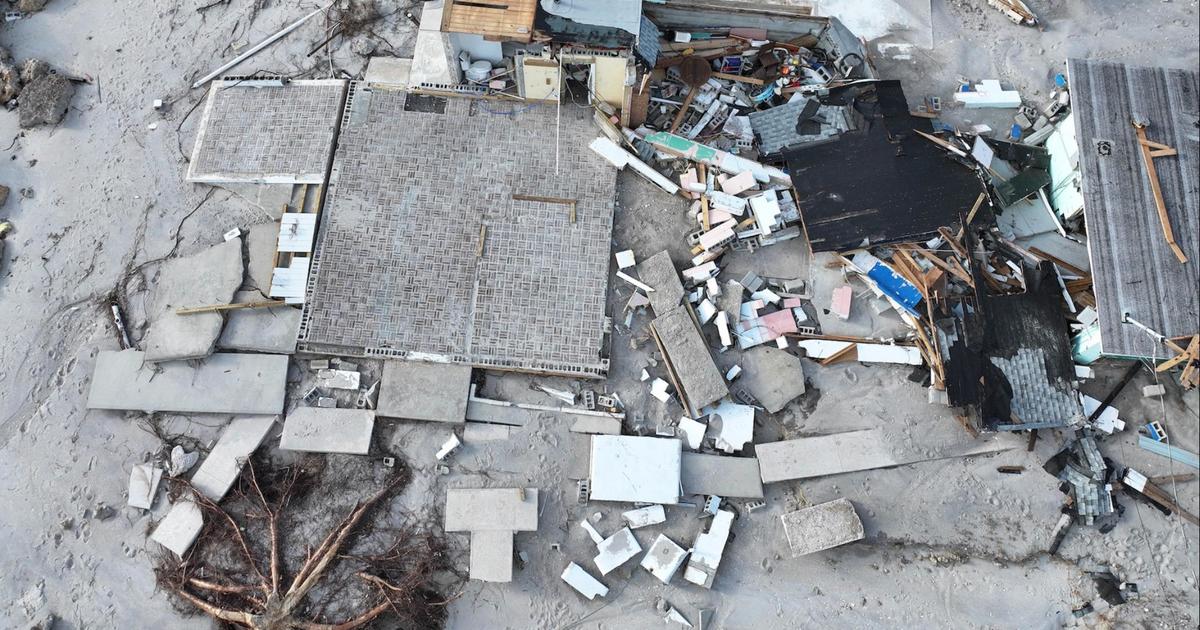
Monstrous hurricanes Helene and Milton caused so much complex havoc that damages are still being added up, but government and private experts say they will likely join the infamous ranks of Katrina, Sandy and Harvey as super costly $50-billion-plus killers.
Making that even more painful is that most of the damage – 95% or more in Helene’s case – was not insured, putting victims in a deeper financial hole.
Storm deaths have been dropping over time, although Helene was an exception. But even adjusted for inflation, damages from intense storms are skyrocketing because people are building in harm’s way, rebuilding costs are rising faster than inflation and human-caused climate change are making storms stronger and wetter, experts in different fields said.
“Today’s storms, today’s events are simply vastly different from yesterday’s events. One of the things that we’re seeing is the energy content that these systems can retain is significantly greater than it used to be,” said John Dickson, president of Aon Edge Insurance Agency, which specializes in flood coverage. “The weather seems to be, in many cases, moving faster than we as a society are able to keep pace with it.”
In the last 45 years, and adjusted for inflation, the National Oceanic and Atmospheric Administration has counted 396 weather disasters that caused at least $1 billion in damage. Sixty-three of those were hurricanes or tropical storms.
The $50 billion mark for direct losses is a threshold that differentiates “truly historic events,” said Adam Smith, the economist and meteorologist who runs the list out of NOAA’s National Center for Environmental Information in Helene-hit Asheville, North Carolina.
Only eight hurricanes reached that threshold. Smith said he thought Milton and Helene have “a very good shot” of joining that list.
The first $50 billion hurricane was Andrew in 1992. The U.S. went 13 more years before Katrina topped the damages chart, then seven years until the third costly whopper, Sandy. Helene and Milton would make seven in the last seven years.
Calculating damages is far from an exact science. The more complex and nastier storms are – like Milton and Helene – the longer it takes, Smith said. Damage is spread over different places and often a much larger area, with wind damage in some places and flood damage elsewhere. Helene, in particular, caused widespread flooding and in places not used to it. Estimates for those storms from private firms in recent days vary and are incomplete.
There’s three categories of damage: insured damage, uninsured damage and total economic cost. Many risk and insurance firms only estimate insured losses.
Homeowner insurance usually covers wind damage, but not flood. Special insurance has to be bought for that. Flood insurance coverage rates vary by region and storms differ on whether they cause more wind or water damage. Helene was mostly water damage, which is less likely to be covered, while Milton had a good chunk of wind damage.
Of the top 10 costliest hurricanes as compiled by insurance giant Swiss Re – not including Helene or Milton yet – insured damage is about 44% of total costs.
But with Helene, Aon’s Dickson estimated that only 5% of victims had insurance coverage for the type of damage they got. He estimated $10 billion in insured damage so doing the math would put total damage in the $100 billion to $200 billion range, which he called a bit high but in the ballpark. Insured losses for Milton are in the $50 billion to $60 billion range, he said.
With Helene, Swiss Re said less than 2% of Georgia households have federal flood insurance, with North Carolina and South Carolina at 3% and 9%. In North Carolina’s Buncombe County, where more than 57 people died from Helene’s flooding, less than 1% of the homes are covered by federal flood insurance, the agency said.
Risk modeling by Moody’s, the financial services conglomerate, put a combined two-storm total damage estimate of $20 billion to $34 billion.
Karen Clark and Company, a disaster modeling firm that uses computer simulations superimposed on storm and insurance data, wouldn’t give total damage estimates for the storms. But the company figured insured losses alone were $36 billion for Milton and $6.4 billion for Helene.
“The economic losses are going up because we’re putting more infrastructure and housing in harm’s way,” said University of South Carolina’s Susan Cutter, co-director of the Hazards Vulnerability and Resilience Institute, who added that climate change also plays a role. “Human losses and deaths are going down because people are being a little bit more vigilant about paying attention to preparedness and getting out of harm’s way.”
Much of the damage is because of flooding. Studies show that hurricanes are getting wetter because of the buildup of heat-trapping gases from the burning of coal, oil and gas. Basic physics dictates that clouds hold 4% more moisture for every degree Fahrenheit, and that falls as rain.
“There is scientific agreement that floods and flooding from these hurricanes is becoming more frequent and more severe. So it is likely that we’re going to be seeing a higher frequency of storms like Helene in the future,” said Karen Clark, who founded her namesake firm. “It’s not really an insurance issue because it’s not privately insured. This is really a societal issue and political question. How do we want to deal with this?”
Clark and several of the experts said it’s time for society to think about where it builds, where it lives and if it should just leave dangerous areas and not rebuild, a concept called “managed retreat.”
“At what point do you as an individual continue to build, rebuild, rebuild and rebuild versus saying ‘OK, I’ve had enough’,” Cutter said.
And when it comes to flood insurance, many homeowners in risky areas find it’s too expensive, so they don’t buy it, Clark said. But when a storm hits them, she said “all of us as taxpayers, we’re going to pay it because we know there are going to be federal dollars coming into those areas to help people rebuild. So all taxpayers, we’re actually paying for people to live in risky areas.”
Technology
World of Warcraft is still here, and it’s still huge

World of Warcraft, or WoW, is like the Red Hot Chili Peppers of the massively multiplayer online roleplaying genre: not only is it still going strong but it’s also somehow even bigger than you thought. World of Warcraft’s current numbers aren’t public, but one recent educated guess came in at 7 million paying subscribers, which, at $15 / month, would make the game a billion-dollar earner by itself. Its developer, Blizzard, merged with Activision in 2008, and Microsoft gobbled up both companies in 2022, but World of Warcraft remains a load-bearing spine of the newly formed corporate turducken. The game that redefined gold mining for the 21st century is still a 19th-century gold mine for its landlords.
It’s also thriving in a subscription ecosystem that it helped to legitimize. World of Warcraft debuted in 2004, during an era when you still had to buy games in boxes from stores. The runaway success of Blizzard’s always-on portal to Azeroth proved that, for the right product, studios could charge a recurring fee beyond the initial cost of the core game’s (at the time) formidable five installation CDs. Here, in the enshittified 2020s, we’ve all grown used to renting our culture by the month, but it was genuinely pathbreaking for World of Warcraft to have 12 million subscribers at its peak in 2010. It didn’t invent the monthly model, which had already gained traction in games like Ultima Online and EverQuest during the dawn of the massively multiplayer online roleplaying game (MMORPG) genre. But World of Warcraft’s success took that recurring charge mainstream and helped popularize the unassailable business logic that having your customers pay you once was worse than having them pay you until they decided or remembered to stop.
As World of Warcraft turns 20, its enduring financial success arguably pales in comparison to its cultural significance. I asked Angela Washko, a new-media artist who staged several notable performance pieces inside the game world, what she considered World of Warcraft’s biggest contribution, for better or worse. “World of Warcraft expanded the notion of what public space was,” she told me. “I saw the bonds created amongst members of my guilds moving beyond the game space, as players flew across the country to meet each other.” Everyone I talked to about World of Warcraft’s legacy seemed to mention someone or other getting married, either in the game itself or here in reality after meeting in the game. “I think the degree of immersion and dissolving of the boundary between ‘real life’ and ‘fantasy’ within World of Warcraft was really a turning point in computing culture,” Washko said, adding that World of Warcraft “changed the conversation around video games from being something that was ‘an escape from everyday life’ to something that was an extension of one’s social life and happened to take place in a virtual environment.”
Through her own work, Washko also explored the less savory side of a fantasy game populated by real people; her Council on Gender Sensitivity and Behavioral Awareness in World of Warcraft involved traveling from town to town to educate passersby about feminism and discuss how the game’s dominant culture often created a hostile environment for its marginalized players. I recalled my own playing days, when you could be flying into a town on your hippogryph, minding your own business, only to be deluged by a wave of sewer-grade hate speech on a public text channel. We now take it for granted that online spaces reflect the social dynamics of the people who occupy them, including and especially the problematic ones, but in many ways, World of Warcraft was the kobold in this particular coal mine.
I first encountered the Warcraft universe like many ’90s computer kids: as a series of top-down, real-time strategy games about economic management and cartoon fantasy violence. The world (lowercase) of Warcraft pitted the seemingly noble Alliance (humans, elves, dwarves, your Tolkienesque usual suspects) against the villainized Horde (orcs, trolls, and other stock monster-humanoids from the trope factory) in a vicious-with-a-touch-of-slapstick conflict spanning three main titles and numerous expansions between 1994 and 2003. If no one was using the phone, you could play against your friends over a modem. The series had a rich and goofy aesthetic of exaggerated proportions, saturated colors, and sarcastic jokes. The units that ran your economy were literal simpering peons, which gave everything a barrel-shaped, vaguely comedic flavor that played well against the high-gloss cinematic interludes that would become Blizzard’s calling card.
Flush with revenues from its flagship series, Blizzard began exploring how it might expand Warcraft’s popular lore into other types of games. First, a point-and-click game called Warcraft Adventures — a late-1990s attempt at LucasArts-style vintage puzzle-solving in a cel-shaded take on the mythos — was infamously canceled for not meeting Blizzard’s internal release standards. (It also leaked, fully playable, not too long ago. Based on what I’ve seen, Blizzard was right.) Then, starting in 2001, an experimental team of a few dozen people got busy building a whole new engine that would bring Azeroth into 3D for the first time and let players meet, socialize, and slaughter skeletons together. It was a primordial example of the modern phenomenon where a corporation exploits its intellectual property by jumping genres and colonizing a new medium. It was also how they’d get me.
There are plenty of humbling ways to use Gmail’s internal search function, especially if you’ve had your account for roughly as long as World of Warcraft has existed. For one example, consider my collected personal correspondence surrounding World of Warcraft, from the peak years of its involvement in my life. When I queried “Warcraft before:2007/1/1,” it yielded about two dozen results, and together, they trace a blunt biography of that moment: landing a big new job; getting hella dumped; and “spending two months as an antisocial hermit,” as I told a friend in a Gchat in early 2006. (And how about World of Warcraft outliving Gchat?)
Reviewing the private record, it’s clear World of Warcraft tore through my life like an experienced raiding party of max-level grinders through the Deadmines. Admittedly, it was the kind of nymph-stage young adult life that was conceptually made of crepe paper and easily shredded by a video game. But something about the predictable rhythm of ordering junk food delivery after an exhausting workday, logging onto World of Warcraft, and hopping through some lush environment searching for herbs to make into sellable virtual potions just drew me in, one night after another.
This aspect of World of Warcraft — its knack for blurring the line between work and fun until the casual observer might not quite recognize it as either — often came up when I spoke to others about their experiences. “One thing WoW proved on a large scale is that people will turn a game into a job at the slightest provocation,” said Cory O’Brien, now a narrative and level designer for games like Redfall and HoloVista. “I remember spending hours and hours and hours grinding for dust so that I could enchant magic items. I remember smelting tin and copper to make bronze.” The elaborate crafting system in World of Warcraft, which often required materials gained through repetitive in-game labor, represented an explosion in the popularity of the now-ubiquitous mechanic where you, as a player, find some stuff and turn it into something else. “I still play all these more recent games like Minecraft, Project Zomboid, and Valheim that are literally just that crafting part,” O’Brien told me. “I spend so much time doing monotonous, repetitive tasks, for free, because somehow we have discovered that that’s fun.” Here, in 2024, it’s hard not to feel a vaguely sinister undertone to all of this as the rising tides of capitalistic overreach gamify the gig economy and hijack the natural human affinity for rewards for their own extractive purposes. But to Washko’s point about an expanded social life, one reason this all worked is that you were often helping out real people, with “legitimate needs” in the scope of the game. You were rarely just doing these things for yourself.
It wasn’t always exactly a waste, either. Andrew Simone, now a project manager in tech, attributes a large swath of his professional tool kit to skills he gained as a guild leader in World of Warcraft. “I actually stopped playing WoW largely because I felt like I was managing my guild more than my actual professional jobs,” he told me, proceeding to outline a frightening slate of workplace-flavored tasks that included interviewing prospective guild candidates, analyzing performance metrics from the game’s multiuser boss fights, dealing with in-guild sexual harassment, managing schedules across the world to hold meetings about all these things, writing guides for new members, and even “cultivating a kind of guild culture so people enjoyed being there,” which is an incredible thing to say about something that is already ostensibly a game. I know there are countless former guild leaders reading this and nodding along because their current workday docket has nothing on mediating a 10-way raiding party dispute over who should get the legendary enchanted pauldrons that just dropped.
On the other hand: plenty of it was a giant waste. I can’t tell you, back in the day, how many hours I was technically playing World of Warcraft but ignoring the game itself while I sifted through, rearranged, and tested various custom add-ons for its labyrinthine, fintech-ass user interface. World of Warcraft is a persistent software ecosystem with clients and servers and all kinds of data flying between them at all times — it’s just not necessarily exposed to every player in full. An entire cottage industry of user-created UI mods sprung up to assign repeatable actions to shortcut keys, or process advanced analytics from game logs like Simone would do for his guild, or implement an “automatic goblin therapist” who answers any incoming whispers to your character with an in-game implementation of the classic ELIZA protocol. Letting players scratch their own itches for how the game felt to play was also a clever way to limit complaints about the parts of it that weren’t as polished. I never got much into the game’s advanced content myself, but for those who did, pretty much the only way to follow the expected meta of guild raids was to use externally designed UI add-ons. World of Warcraft had the audacity to make players create their own custom cockpits for the game and ended up creating a kind of recursive procrastination where you could even distract yourself from your intended leisure activity. Anyone who’s ever rearranged the app icons on their phone knows just how ubiquitous this kind of time-consuming “metawork” has become.
Recently, I engaged in a more contemporary form of networked social entertainment — sitting around a big TV with friends, watching four strangers play a game together on Twitch. Just as things were picking up, the stream cut out, and an algorithmically inserted video ad began to play: it was for World of Warcraft. This was a group of mostly game designers, and before I had a chance to say anything, someone else piped in to mention World of Warcraft was 20 years old now — and formally impactful enough that working game makers still know its birthday.
Seeing that ad, writing this piece, none of it was enough to get me to reinstall World of Warcraft. (It’s a good thing the game never stooped to making you feed your in-game pets.) I didn’t really feel I had to replay the game to measure its influence because its influence is everywhere. Every monthly subscription, in-game economy, or digital “third place” where lives bleed into online connections owes it some spiritual recognition as prior art; those things have all become inescapable. Twenty years later, we are all living in the World of Warcraft.
-

 Science & Environment4 weeks ago
Science & Environment4 weeks agoHyperelastic gel is one of the stretchiest materials known to science
-

 Technology4 weeks ago
Technology4 weeks agoWould-be reality TV contestants ‘not looking real’
-

 Science & Environment4 weeks ago
Science & Environment4 weeks agoHow to unsnarl a tangle of threads, according to physics
-

 Science & Environment4 weeks ago
Science & Environment4 weeks ago‘Running of the bulls’ festival crowds move like charged particles
-

 Science & Environment4 weeks ago
Science & Environment4 weeks agoMaxwell’s demon charges quantum batteries inside of a quantum computer
-

 Technology3 weeks ago
Technology3 weeks agoIs sharing your smartphone PIN part of a healthy relationship?
-

 Science & Environment4 weeks ago
Science & Environment4 weeks agoLiquid crystals could improve quantum communication devices
-

 Womens Workouts3 weeks ago
Womens Workouts3 weeks ago3 Day Full Body Women’s Dumbbell Only Workout
-

 Science & Environment4 weeks ago
Science & Environment4 weeks agoQuantum ‘supersolid’ matter stirred using magnets
-

 Science & Environment3 weeks ago
Science & Environment3 weeks agoX-rays reveal half-billion-year-old insect ancestor
-

 Science & Environment4 weeks ago
Science & Environment4 weeks agoWhy this is a golden age for life to thrive across the universe
-

 Science & Environment4 weeks ago
Science & Environment4 weeks agoSunlight-trapping device can generate temperatures over 1000°C
-

 Science & Environment4 weeks ago
Science & Environment4 weeks agoQuantum forces used to automatically assemble tiny device
-

 Science & Environment4 weeks ago
Science & Environment4 weeks agoNerve fibres in the brain could generate quantum entanglement
-

 Science & Environment4 weeks ago
Science & Environment4 weeks agoITER: Is the world’s biggest fusion experiment dead after new delay to 2035?
-

 Science & Environment4 weeks ago
Science & Environment4 weeks agoHow to wrap your mind around the real multiverse
-
News1 month ago
the pick of new debut fiction
-

 Science & Environment4 weeks ago
Science & Environment4 weeks agoA slight curve helps rocks make the biggest splash
-

 Science & Environment4 weeks ago
Science & Environment4 weeks agoLaser helps turn an electron into a coil of mass and charge
-

 News4 weeks ago
News4 weeks agoOur millionaire neighbour blocks us from using public footpath & screams at us in street.. it’s like living in a WARZONE – WordupNews
-

 Science & Environment4 weeks ago
Science & Environment4 weeks agoTime travel sci-fi novel is a rip-roaringly good thought experiment
-

 Science & Environment4 weeks ago
Science & Environment4 weeks agoNuclear fusion experiment overcomes two key operating hurdles
-

 Technology3 weeks ago
Technology3 weeks agoWhy Machines Learn: A clever primer makes sense of what makes AI possible
-

 Science & Environment4 weeks ago
Science & Environment4 weeks agoPhysicists are grappling with their own reproducibility crisis
-

 News1 month ago
News1 month ago▶️ Hamas in the West Bank: Rising Support and Deadly Attacks You Might Not Know About
-

 News4 weeks ago
News4 weeks ago▶️ Media Bias: How They Spin Attack on Hezbollah and Ignore the Reality
-

 News4 weeks ago
News4 weeks agoYou’re a Hypocrite, And So Am I
-
Business3 weeks ago
Eurosceptic Andrej Babiš eyes return to power in Czech Republic
-

 Sport4 weeks ago
Sport4 weeks agoJoshua vs Dubois: Chris Eubank Jr says ‘AJ’ could beat Tyson Fury and any other heavyweight in the world
-

 Science & Environment4 weeks ago
Science & Environment4 weeks agoA new kind of experiment at the Large Hadron Collider could unravel quantum reality
-

 Technology2 weeks ago
Technology2 weeks agoMicrophone made of atom-thick graphene could be used in smartphones
-

 Business2 weeks ago
Business2 weeks agoWhen to tip and when not to tip
-

 Science & Environment4 weeks ago
Science & Environment4 weeks agoCaroline Ellison aims to duck prison sentence for role in FTX collapse
-

 News1 month ago
News1 month agoNew investigation ordered into ‘doorstep murder’ of Alistair Wilson
-

 Science & Environment4 weeks ago
Science & Environment4 weeks agoPhysicists have worked out how to melt any material
-

 Science & Environment4 weeks ago
Science & Environment4 weeks agoRethinking space and time could let us do away with dark matter
-
News4 weeks ago
The Project Censored Newsletter – May 2024
-

 Technology3 weeks ago
Technology3 weeks agoQuantum computers may work better when they ignore causality
-

 Sport3 weeks ago
Sport3 weeks agoWatch UFC star deliver ‘one of the most brutal knockouts ever’ that left opponent laid spark out on the canvas
-

 Technology3 weeks ago
Technology3 weeks agoUniversity examiners fail to spot ChatGPT answers in real-world test
-

 Health & fitness4 weeks ago
Health & fitness4 weeks agoThe secret to a six pack – and how to keep your washboard abs in 2022
-

 Science & Environment4 weeks ago
Science & Environment4 weeks agoA tale of two mysteries: ghostly neutrinos and the proton decay puzzle
-

 Technology3 weeks ago
Technology3 weeks agoRobo-tuna reveals how foldable fins help the speedy fish manoeuvre
-
Business3 weeks ago
Should London’s tax exiles head for Spain, Italy . . . or Wales?
-

 MMA3 weeks ago
MMA3 weeks agoConor McGregor challenges ‘woeful’ Belal Muhammad, tells Ilia Topuria it’s ‘on sight’
-

 Football3 weeks ago
Football3 weeks agoFootball Focus: Martin Keown on Liverpool’s Alisson Becker
-

 Technology2 weeks ago
Technology2 weeks agoThis AI video generator can melt, crush, blow up, or turn anything into cake
-

 Sport2 weeks ago
Sport2 weeks agoCoco Gauff stages superb comeback to reach China Open final
-

 Technology2 weeks ago
Technology2 weeks agoUkraine is using AI to manage the removal of Russian landmines
-
Business2 weeks ago
DoJ accuses Donald Trump of ‘private criminal effort’ to overturn 2020 election
-

 Sport2 weeks ago
Sport2 weeks agoWales fall to second loss of WXV against Italy
-

 Science & Environment4 weeks ago
Science & Environment4 weeks agoFuture of fusion: How the UK’s JET reactor paved the way for ITER
-

 Technology3 weeks ago
Technology3 weeks ago‘From a toaster to a server’: UK startup promises 5x ‘speed up without changing a line of code’ as it plans to take on Nvidia, AMD in the generative AI battlefield
-

 News4 weeks ago
News4 weeks agoIsrael strikes Lebanese targets as Hizbollah chief warns of ‘red lines’ crossed
-

 Technology3 weeks ago
Technology3 weeks agoGet ready for Meta Connect
-

 Technology2 weeks ago
Technology2 weeks agoAmazon’s Ring just doubled the price of its alarm monitoring service for grandfathered customers
-

 News2 weeks ago
News2 weeks agoHeartbreaking end to search as body of influencer, 27, found after yacht party shipwreck on ‘Devil’s Throat’ coastline
-
Politics3 weeks ago
Robert Jenrick vows to cut aid to countries that do not take back refused asylum seekers | Robert Jenrick
-
Business2 weeks ago
Ukraine faces its darkest hour
-
Business2 weeks ago
Bank of England warns of ‘future stress’ from hedge fund bets against US Treasuries
-

 Entertainment2 weeks ago
Entertainment2 weeks agoChristopher Ciccone, artist and Madonna’s younger brother, dies at 63
-

 Sport4 weeks ago
Sport4 weeks agoUFC Edmonton fight card revealed, including Brandon Moreno vs. Amir Albazi headliner
-

 Science & Environment4 weeks ago
Science & Environment4 weeks agoBeing in two places at once could make a quantum battery charge faster
-

 Technology4 weeks ago
Technology4 weeks agoThe ‘superfood’ taking over fields in northern India
-

 Science & Environment4 weeks ago
Science & Environment4 weeks agoUK spurns European invitation to join ITER nuclear fusion project
-

 Science & Environment4 weeks ago
Science & Environment4 weeks agoWhy we need to invoke philosophy to judge bizarre concepts in science
-

 CryptoCurrency4 weeks ago
CryptoCurrency4 weeks agoCardano founder to meet Argentina president Javier Milei
-
Politics4 weeks ago
UK consumer confidence falls sharply amid fears of ‘painful’ budget | Economics
-

 TV4 weeks ago
TV4 weeks agoCNN TÜRK – 🔴 Canlı Yayın ᴴᴰ – Canlı TV izle
-

 News4 weeks ago
News4 weeks agoWhy Is Everyone Excited About These Smart Insoles?
-

 Womens Workouts3 weeks ago
Womens Workouts3 weeks ago3 Day Full Body Toning Workout for Women
-

 Health & fitness3 weeks ago
Health & fitness3 weeks agoThe 7 lifestyle habits you can stop now for a slimmer face by next week
-

 News1 month ago
News1 month agoHow FedEx CEO Raj Subramaniam Is Adapting to a Post-Pandemic Economy
-

 CryptoCurrency4 weeks ago
CryptoCurrency4 weeks agoDZ Bank partners with Boerse Stuttgart for crypto trading
-
Business4 weeks ago
Thames Water seeks extension on debt terms to avoid renationalisation
-
Politics4 weeks ago
‘Appalling’ rows over Sue Gray must stop, senior ministers say | Sue Gray
-

 Science & Environment4 weeks ago
Science & Environment4 weeks agoMeet the world's first female male model | 7.30
-

 News4 weeks ago
News4 weeks agoFour dead & 18 injured in horror mass shooting with victims ‘caught in crossfire’ as cops hunt multiple gunmen
-

 Servers computers3 weeks ago
Servers computers3 weeks agoWhat are the benefits of Blade servers compared to rack servers?
-

 Sport2 weeks ago
Sport2 weeks agoWorld’s sexiest referee Claudia Romani shows off incredible figure in animal print bikini on South Beach
-

 Sport2 weeks ago
Sport2 weeks agoLauren Keen-Hawkins: Injured amateur jockey continues progress from serious head injury
-

 TV2 weeks ago
TV2 weeks agoPhillip Schofield accidentally sets his camp on FIRE after using emergency radio to Channel 5 crew
-

 Business2 weeks ago
Business2 weeks agoChancellor Rachel Reeves says she needs to raise £20bn. How might she do it?
-

 MMA2 weeks ago
MMA2 weeks agoDana White’s Contender Series 74 recap, analysis, winner grades
-

 MMA2 weeks ago
MMA2 weeks agoPereira vs. Rountree prediction: Champ chases legend status
-

 Technology2 weeks ago
Technology2 weeks agoTexas is suing TikTok for allegedly violating its new child privacy law
-

 News2 weeks ago
News2 weeks agoMassive blasts in Beirut after renewed Israeli air strikes
-

 News2 weeks ago
News2 weeks agoNavigating the News Void: Opportunities for Revitalization
-

 Politics4 weeks ago
Politics4 weeks agoTrump says he will meet with Indian Prime Minister Narendra Modi next week
-

 CryptoCurrency4 weeks ago
CryptoCurrency4 weeks agoEthereum is a 'contrarian bet' into 2025, says Bitwise exec
-

 Health & fitness4 weeks ago
Health & fitness4 weeks agoThe maps that could hold the secret to curing cancer
-
Business4 weeks ago
JPMorgan in talks to take over Apple credit card from Goldman Sachs
-

 Science & Environment4 weeks ago
Science & Environment4 weeks agoQuantum time travel: The experiment to ‘send a particle into the past’
-

 Science & Environment4 weeks ago
Science & Environment4 weeks agoTiny magnet could help measure gravity on the quantum scale
-

 Science & Environment4 weeks ago
Science & Environment4 weeks agoMost accurate clock ever can tick for 40 billion years without error
-

 CryptoCurrency4 weeks ago
CryptoCurrency4 weeks agoDecentraland X account hacked, phishing scam targets MANA airdrop
-

 CryptoCurrency4 weeks ago
CryptoCurrency4 weeks agoBitcoin miners steamrolled after electricity thefts, exchange ‘closure’ scam: Asia Express
-

 CryptoCurrency4 weeks ago
CryptoCurrency4 weeks agoLow users, sex predators kill Korean metaverses, 3AC sues Terra: Asia Express
-

 CryptoCurrency4 weeks ago
CryptoCurrency4 weeks agoBlockdaemon mulls 2026 IPO: Report
-

 MMA4 weeks ago
MMA4 weeks agoRankings Show: Is Umar Nurmagomedov a lock to become UFC champion?

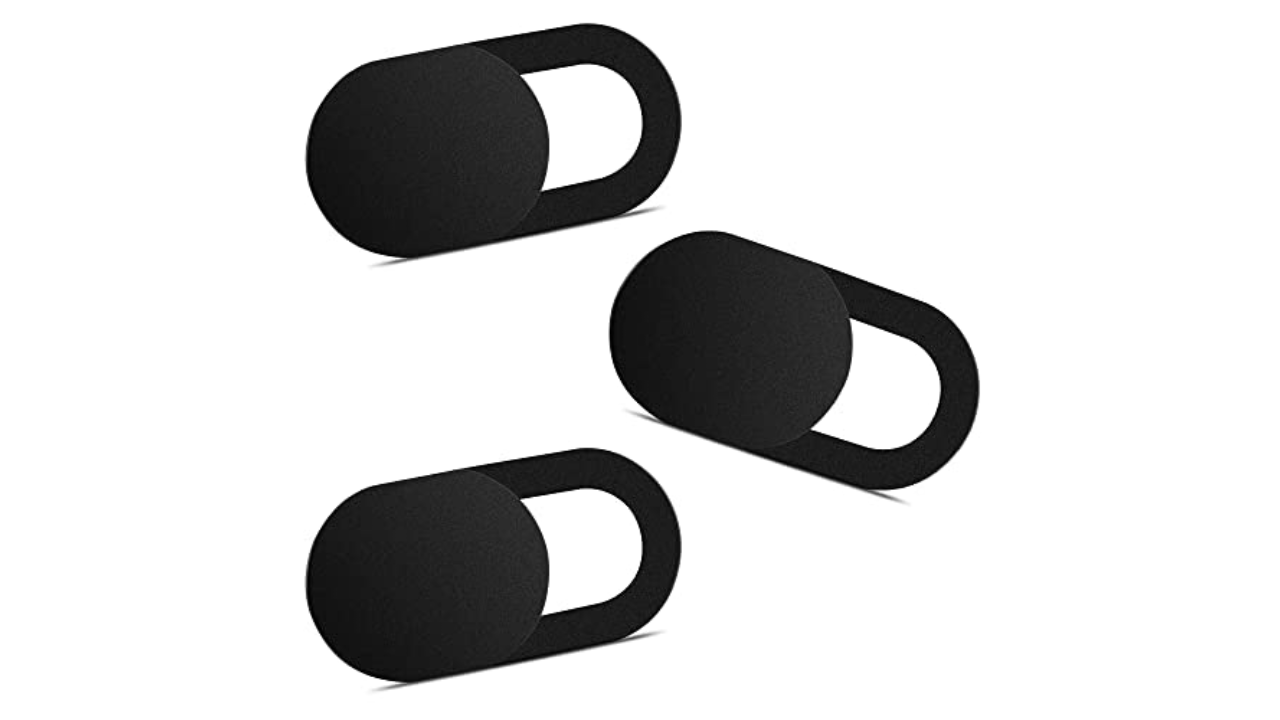
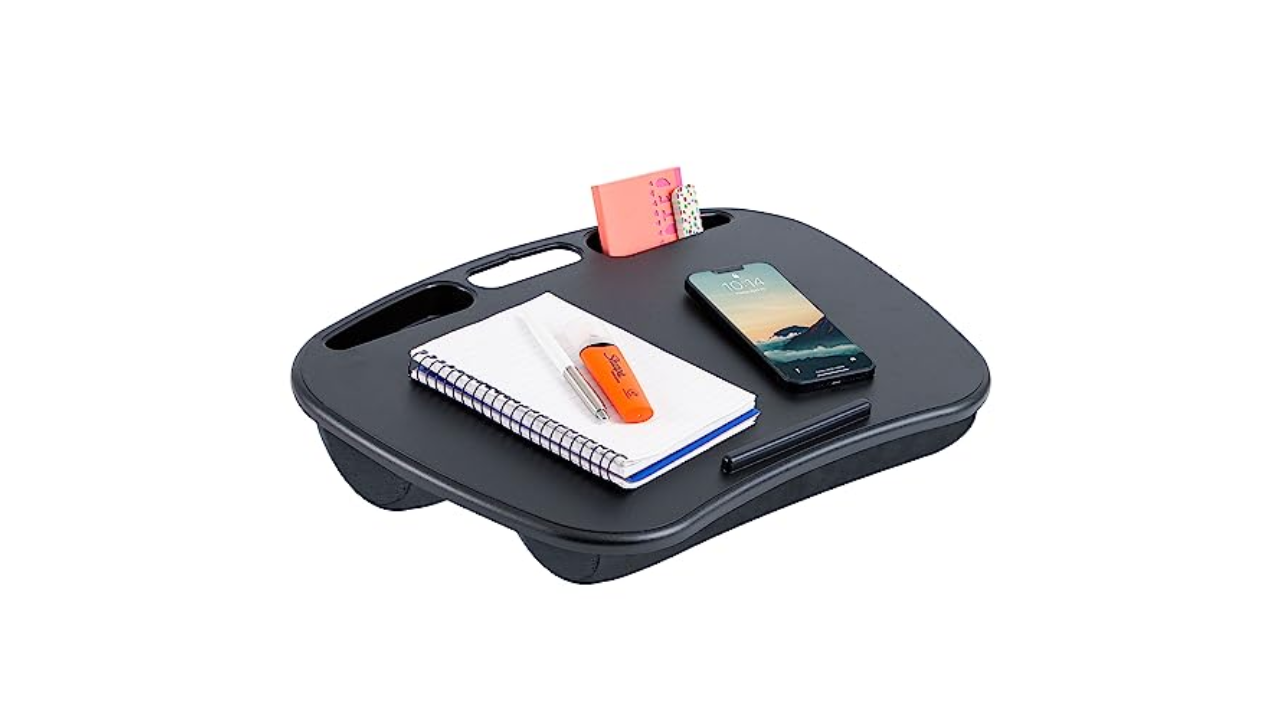
You must be logged in to post a comment Login